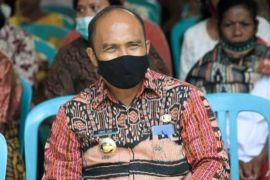"Crisis management is a systemic approach that aims to build the capacity of the tourism ecosystem in preparing, responding, and recovering from a crisis," coordinator for crisis management and deputy for destination development and infrastructure at the Ministry of Tourism and Creative Economy, Danesta F. Nugroho, said on Thursday.
Any crisis attributed to natural and non-natural factors would have a negative impact on the performance of the creative tourism ecosystem, such as a decrease in tourist visits, a decline in income from the creative economy sector, and a fall in hotel room occupancy rates, besides affecting tourism sector workers, he noted.
Therefore, there are four phases of crisis management that must be mastered—the preparedness phase, the emergency response phase, the recovery phase, and the normalization phase.
Nugroho said that the ministry is currently focusing on the preparedness phase to reduce disaster risk through mitigation.
To survive disasters, tourist villages must prepare several activities for each phase. In the preparedness phase, an understanding of disaster risk must be developed, namely about local threats, both historical and potential, the number of people and assets exposed, as well as disaster-safe facilities and disaster risk management.
Related news: Some 1,528 tourist villages registered for ADWI 2021: Deputy
Disaster risk management efforts involve structural mitigation, non-structural mitigation, increasing the clarity of information regarding conditions, strengthening tourist preparedness, strengthening the early warning chain cycle, collecting tourist data, facilitating access to information for tourists, facilitating insurance, and improving the quality of tourism facilities.
"We are focusing on increasing the capacity of a tourism destination and tourist village to reduce disaster risk in tourist villages," Nugroho informed.
To encourage tourism villages to build resiliency against disasters, the ministry has also prepared a Business Continuity Plan (BCP) for the tourism sector with the Coordinating Ministry for Economic Affairs to increase awareness among business owners on disaster preparation. The goal is to reduce the potential of economic losses after disasters.
Nugroho said the concept must ideally be applied in tourism destination areas in order to improve sustainability and accelerate regional recovery after a major disaster.
Based on the disaster profile of Floratama area, the ministry has listed East Manggarai district as the area with the largest multi-disaster risk and Ngada district as the area with the lowest risk level.
The ministry has also identified the threat of disaster in several tourist villages within Floratama area. Disaster-resilient villages have also been formed in each district within Floratama.
The ministry has taken several steps to mitigate disasters, including encouraging the use of village funds in each tourist village. The village funds are expected to be prioritized for the mitigation and handling of natural disasters, including for mapping potential disaster-prone areas in villages, building evacuation routes, providing evacuation route pointers, conducting natural disaster emergency response activities, providing refugee places, as well as carrying out environmental rehabilitation and reconstruction.
"Village funds can be used for mitigation and handling of natural and non-natural disasters according to village authority," he said.
Related news: Ministry urges tourist villages to provide application for promotion
Related news: Tourist villages create jobs, boost people's prosperity: minister
Translator: Fransiska Mariana N, Resinta S
Editor: Suharto
Copyright © ANTARA 2022












